EXT Storia V4
MSRP:
- Damper: $1,069 USD / €1,069 (w/ VAT)
- Springs: $130 USD / €130 (w/ VAT)
Adjustments: Rebound, high- and low-speed compression, hydraulic bottom-out, climb switch
Sizes Offered:
- Metric:
- 210 x 47.5 / 50 / 52.5 / 55 mm
- 230 x 57.5 / 60 / 62.5 / 65 mm
- 250 x 67.5 / 70 / 72.5 / 75 mm
- Metric Trunnion:
- 185 x 47.5 / 50 / 52.5 / 55 mm
- 205 x 57.5 / 60 / 62.5 / 65 mm
- 225 x 67.5 / 70 / 72.5 / 75 mm
Stated Weight: 401 g (210 x 55 mm, w/o spring)
Blister’s Measured Weight:
- Storia V4 Damper: 443 g (230 x 65 mm)
- 425 lb spring: 260 g
- 450 lb spring: 254 g
Reviewer: 6′, 170 lb / 183 cm, 77.1 kg
Bolted To: Contra MC
Test Duration: 3 months
Test Locations: Washington & British Columbia
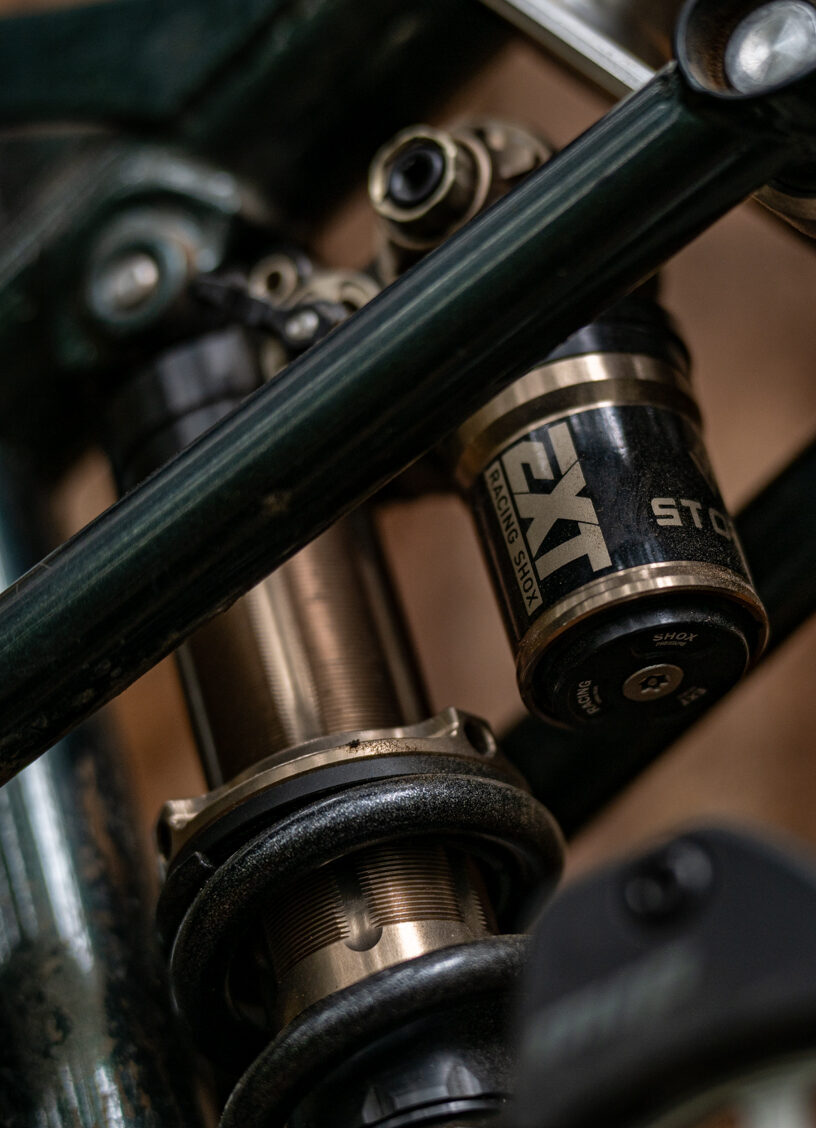
Intro
We’ve been impressed with a whole bunch of iterations of the EXT Storia (and Arma) V3 over the years, so I was very curious to see how the Storia V4 would stack up. My expectations were high, certainly, but would EXT have really found all that much to improve over the already excellent V3? I was eager to find out.
[For a much more detailed rundown on the design and details of the Storia V4, check out our First Look and Ep.224 of Bikes & Big Ideas with EXT Founder Franco Fratton.]
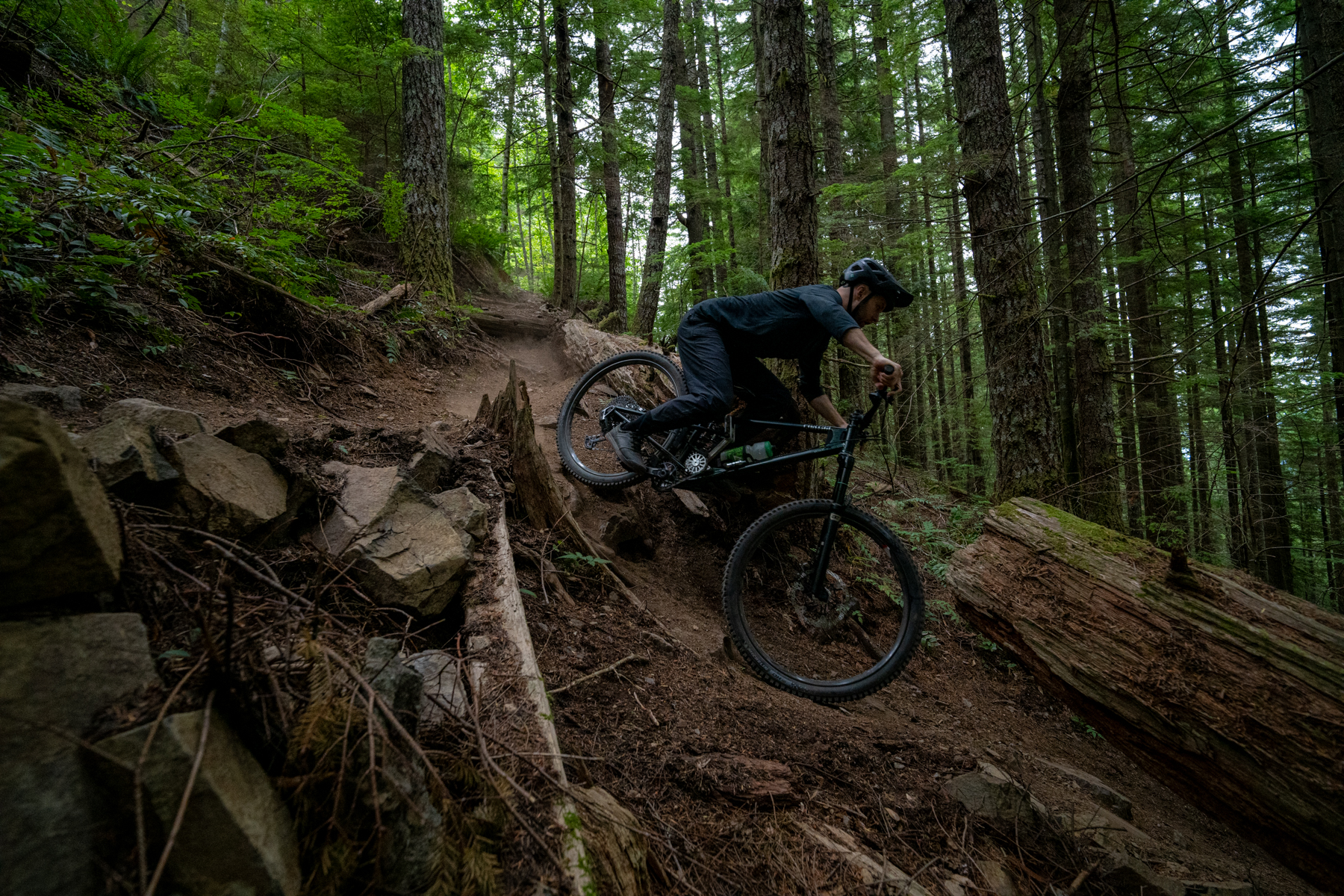
Performance
As Franco laid out in that Bikes & Big Ideas conversation, EXT’s goal for the Storia V4 was to build on the strengths of the V3 and refine what they could, rather than take the new version in a completely different direction. They’ve done so very effectively.
One of the biggest strengths of the Storia V3 is how well it’s able to keep the chassis planted and the rear tire gripping through faster, rougher bits of trail, and that’s still true of the V4. The Storia V4 does a very good job of being able to run fairly firm high-speed compression damping without feeling harsh or spike-y on really sharp impacts. But as tuned for our Contra MC test bike, its overall damping levels just feel well-chosen and appropriate for the bike and the spring rate I need on it, rather than being specifically heavily damped.
The Storia V4 does an especially good job of feeling supple and moving freely / changing direction well over small chatter, while smoothly ramping up into firmer, more composed-feeling high-speed compression damping on bigger, sharper impacts. It’s a really nice combo for maintaining grip and keeping the bike flat and composed on rough, natural terrain in particular; firming up the low-speed compression adjuster helps build in some pop and liveliness at the expense of some of that ultra-glued-to-the-ground feeling on smaller chatter, but at least for my preferences, the Storia shines most strongly when set up to maximize grip and a fairly planted feel. You can get a more lively, energetic feel out of it if you want, but that sort of setup feels less ideally suited to the Storia’s strengths, and it doesn’t set itself apart from a variety of other shocks (including EXT’s own Aria) as strongly if you want to go that route.
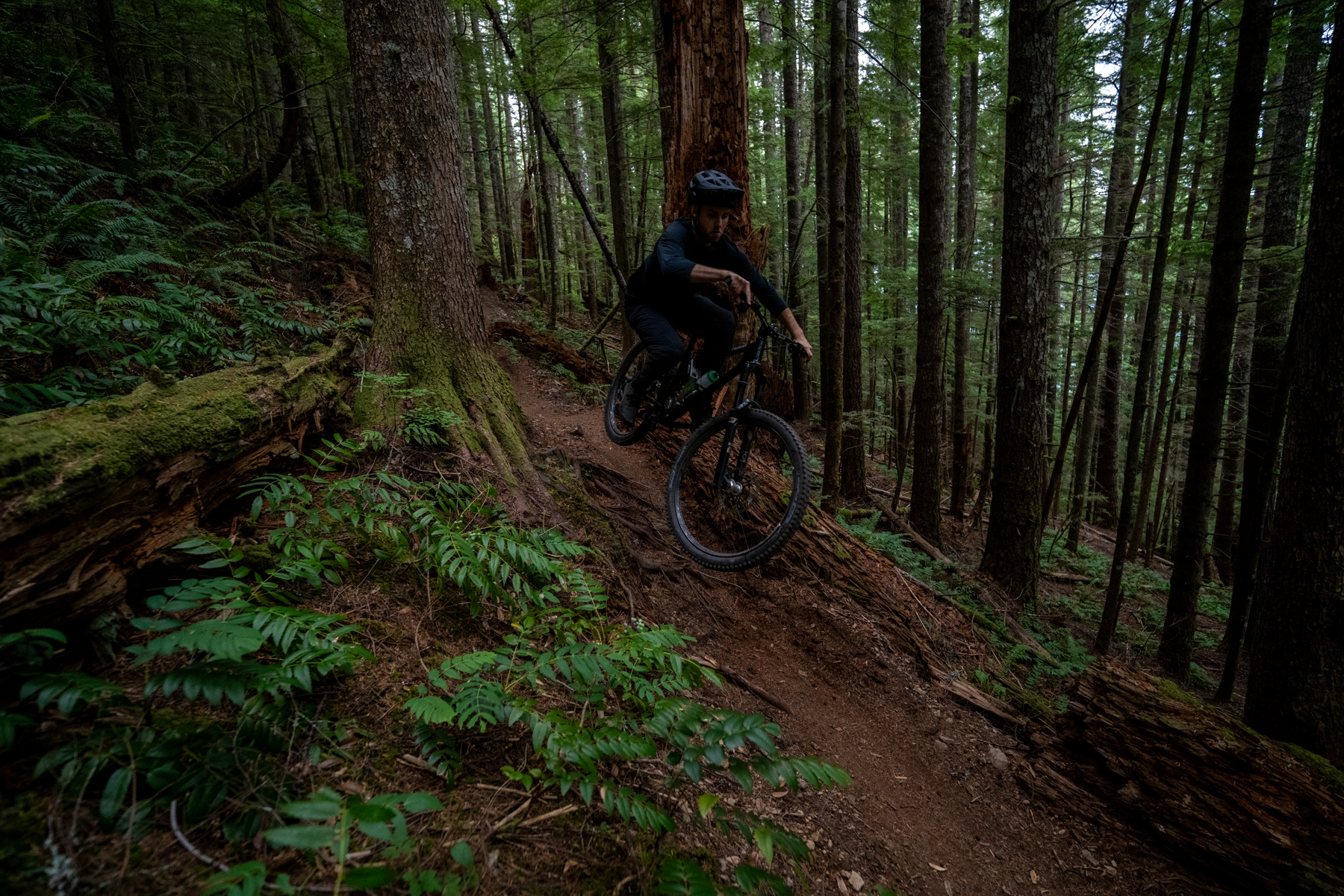
As has been my experience with a bunch of Storias on a range of bikes over the years, the V4’s damping adjusters are effective, but the overall range of adjustability isn’t massively wide. EXT’s take is that making an overly wide range of adjustability both makes it easier for folks to set their suspension up notably poorly, by offering settings that are outside the bounds of what they could realistically use, and can compromise the overall quality of the damping by relying on the adjusters too heavily, and forcing them to do more than they’re ideally suited for. Getting a good baseline tune on the Storia for the bike and rider in question is quite important, but EXT’s ordering process includes asking some questions to get things dialed in there, and I was very happy with where we ended up on the first try.
It does help that the Storia V4’s rebound adjustment range feels a bit wider than that of the V3. It’s still not massive (per the logic laid out above) but it feels like there’s a bit more wiggle room to dial the rebound performance in, which I’ve found welcome. I have needed to take a second try at the baseline rebound tune on a couple of Storia V3s over the years (and have been on a bunch that were great out of the box); the V4 tested here was on the money, and the widened adjustment range should make that easier.
In keeping with the broader rebound adjustment range, many of the updates EXT has made to the Storia V4 are centered around ease of use and refining the overall user experience. The switch to a 5 mm Allen key from a 12 mm box wrench for the high-speed compression adjuster makes trailside tweaks much easier, for example, and while the Storia V3 performed extremely well, it was somewhat noisy which was offputting to some folks.
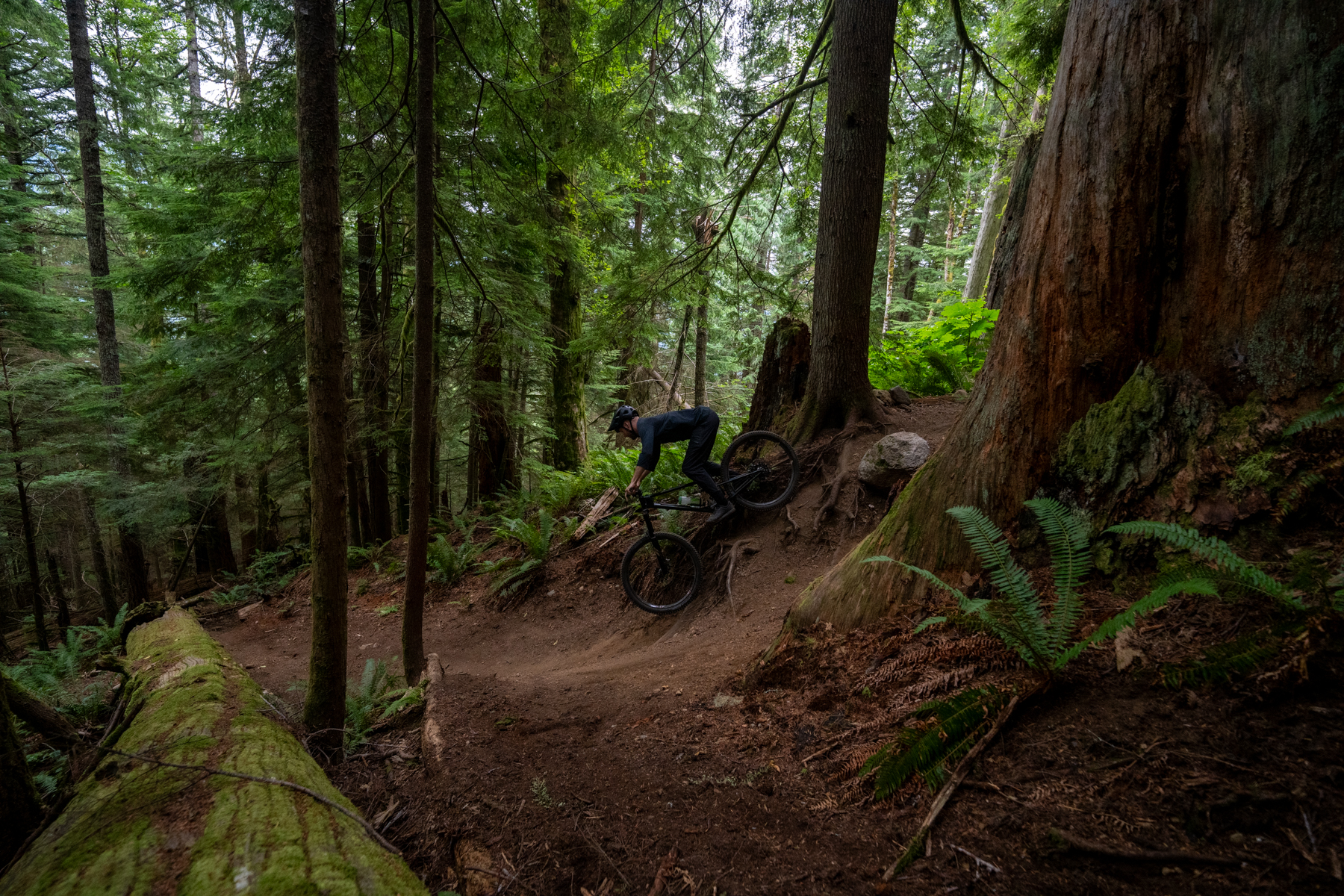
EXT has done a lot to quiet down the Storia V4 damper. The V3 made some audible slurping noises as oil moved through it. I never minded all that much and didn’t find it to be particularly obtrusive when riding, but the V4 is far quieter. It’s still not 100% silent but is quiet enough that I haven’t noticed it at all while riding, even on a very quiet bike with a near-silent Hadley rear hub.
Another potential source of noise on the Storia V3 was a slight rattle from the plastic washer that EXT used to provide a flat face for the (minimalist) bottom-out bumper to contact since the face of the damper body featured a series of cutouts that would have chewed up the bumper otherwise. The V4 has a flat face to the damper body which does away with the need for the washer and with it the rattle it could cause. The clip-in thrust bearings at the spring perches on the V4 do a great job of keeping the spring centered and preventing it from making any rubbing or creaking noises, too — something that can crop up on coil shocks of all sorts, especially in really dusty conditions.
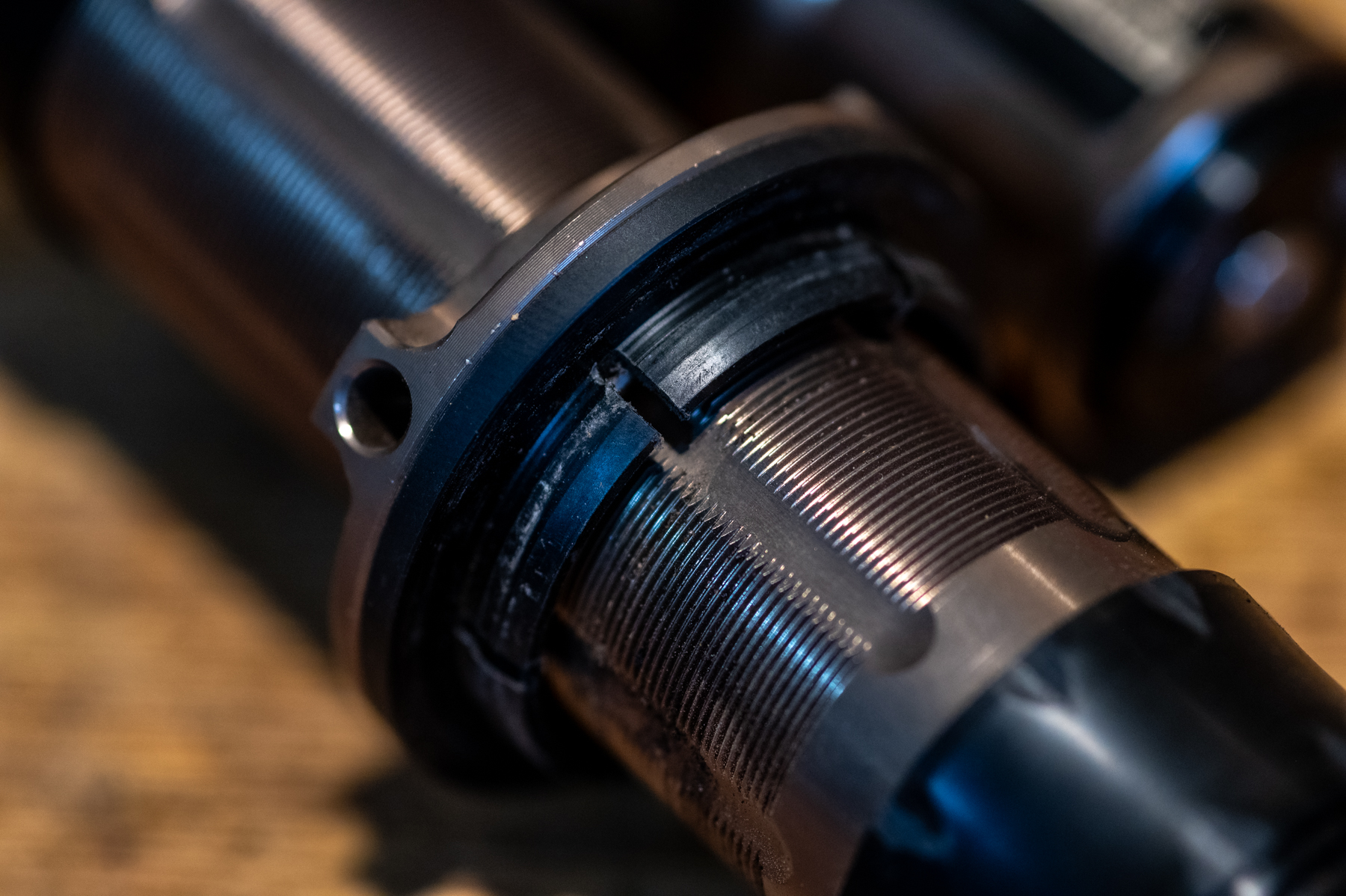
Probably the most significant individual change from the Storia V3 to the V4, from a pure suspension performance standpoint, is that the hydraulic bottom-out circuit on the V4 is externally adjustable and can be run much, much firmer than the stock valving on the V3. The range of external adjustment is quite broad, but at the firmer end of the range, the effect of the HBO circuit is much more pronounced than it is on the V3. There are ten detents throughout the range, though they’re not very clearly defined. It’s not a big deal, especially for an adjustment that I think will be used by most folks to find a good baseline setting and then left alone, but it takes some care to feel the clicks, especially at the firmer end of the adjustment range.
And I like the tunability (and potential to run the HBO much firmer) on the Storia V4, in large part because it’s let me go down one spring rate (to 425 lb / in, from 450 on the Storia V3) on the Contra MC without getting an occasional harsh bottom-out. The lower spring rate gives better initial sensitivity and grip, and the extra damping afforded by the beefed-up HBO circuit both makes up for the lighter spring rate in terms of bottom-out resistance and makes the transition to a near bottom-out event feel better controlled.
The Storia V3 could also occasionally issue a very slight clunk when it transitioned from compression to rebound. I never noticed it on the trail — only when bouncing a bike by hand in the shop — but that’s gone on the V4, too. The Storia V4 stands out for feeling especially consistent, predictable, and generally just disappearing under me, in a good way. I had an easy time finding good baseline settings, and after a bit more work to really hone my settings in, I’ve just been able to forget about the Storia and go ride without it doing anything weird or unexpected to make its presence known.
The Storia V4’s climb switch also feels a bit firmer than the V3’s, which I think is also for the better. I’ve found myself using climb switches less and less frequently in recent years, as the climbing manners of modern bikes have gotten better refined, so I’m all for making the switch extra firm for when you really want or need it. On a bike (like the Contra MC that I used for the test) that isn’t particularly reliant on a climb switch to pedal efficiently, I like just leaving it off most of the time, and having it as a fallback when called upon. The Storia V4’s “Lok” switch is still well short of a true lockout — it’ll open up and move when you really need it to — but it’s a good bit firmer than the V3 (or the Fox Float X2 / DHX2); the RockShox SuperDeluxe / Vivid might be a notch fimer yet, but they’re a much closer comparison to the Storia V4.
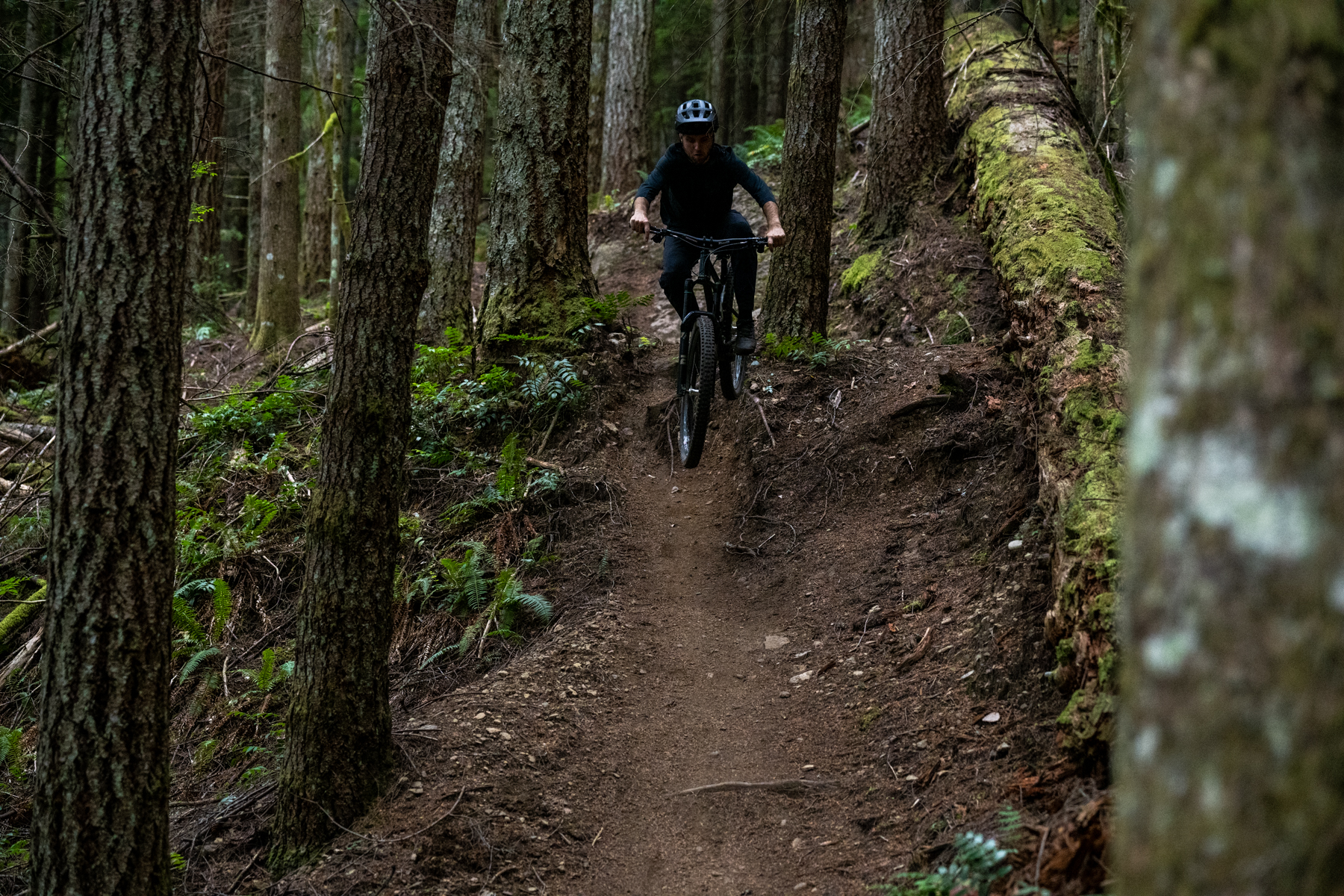
As for longer-term durability, I’ve had generally good luck with a bunch of Storia V3s over the years, and nothing to report on the V4 so far. Despite the move to a steel damper shaft from an aluminum one (which should be harder-wearing and more resistant to bending on bikes that put a lot of side load into the damper), the Storia V4 is only a few grams heavier than the V3 (443 g for the V4 vs 417 g for the V3, both in a 230 x 65 mm size without a spring or hardware) — still notably light for a coil-sprung shock, especially once you factor in EXT’s exceptionally light coil springs. (For reference, a 450 lb/in EXT spring for a 65 mm stroke shock weighs 254 g; a Fox SLS spring in that same spec weighs 310 g, and a RockShox one weighs 494 g).
Who’s It For?
My answer hasn’t changed a ton from when I reviewed the Storia V3 a few years back — the Storia V4 is an excellent coil shock, particularly for folks who (1) have a decent handle on suspension setup and want to really take advantage of its fine tunability and (2) would prefer a setup on the more planted, grippy, and composed end of the spectrum over being super lively and energetic feeling. It’s an excellent option for those folks, and as someone who counts himself in that camp, the Storia V4 is my favorite big Enduro bike shock I’ve ridden to date.
Bottom Line
Updating an already excellent product can be a daunting task, but EXT has done a great job of finding lots of little details to refine in the Storia V4 without getting away from what made the V3 good in the first place. The Storia V4 is quieter, easier to live with, and gets some real performance gains over the V3, and it’s hard to know what more we could have asked for. It’s excellent.
And I’m also pleased to report that we’ll be testing the EXT Arma V4 shortly, and setting up a Storia V4 vs… the worst-kept secret in high-end rear shocks comparison soon, too. Stay tuned.

Any chance you’ve been on an e-storia? feels like there’s a fair bit of carryover from the e-storia to the v4. Mostly curious if the v4 lets you pick faster settings. the e-storia is SLOW
I haven’t, but when you say it’s slow, do you mean in terms of the rebound adjustment range? That would be a matter of the tune you have rather than anything inherent to the shock itself.
Yeah, the adjustment range is quite slow. I’ve thought about sending it back to be retuned, but curious if they’ve changed that range.
Sounds like a lighter rebound tune would be the way to go. It’s straightforward to get that changed as part of a regular service.
If you haven’t seen it then, Otter MTB on YouTube has a video on the E.
Any hints on when we might see your comparison between the Storia v4 and the Telum? I’ve narrowed down my new coil search to these two for my new build (current owner of an E-Storia on my e-bike and Storia v3 + Smashpot on my G1). Happy to support either of these brands as experiences to date have been excellent with both so really looking forward to your comparison to help the decision.
The frame our Telum is destined for got delayed a bit but it shipped last week and I’ll post some early impressions soon in a Flash Review. Full review will be a few months out.
Hey.
Any comparison to Fox dhx2 2024 and RS Vivid coil Ult? I am building Nomad V6, and it came with FOx dhx2. I had a previous Storia V3, and it was a really good shock. BUt service is much more expensive than those 2 shock above. I also had Superdeluxe ultimate with HBO on Nomad V4, and I did not like that shock. So, I am debating between selling the Fox and getting the RS vivid or the much more expensive Storia V4. I am not very good at shock setup as well, which might be a problem with the fox ( Santa Cruz has some guide for fox and RS, but hard to say if it will be good or not so much).
Thank you for any advice